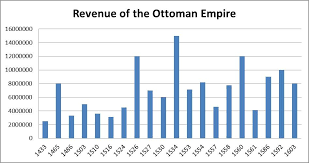
Fertility And Faith
The Demographic World Religions
“Growth of religion” is the spread of religions and the increase of religious adherents around the world. Statistics commonly measure the absolute number of adherents, the percentage of the absolute growth per year, and the growth of converts in the world.
While the world’s population is projected to grow 32 percent in the coming decades, the number of Muslims is expected to increase by 70 percent – from 1.8 billion in 2015 to nearly 3 billion in 2060. In 2015, Muslims made up 24.1 percent of the global population.
Studies in the 21st century suggest that, in terms of percentage and worldwide spread, Islam is the fastest-growing major religion in the world. A comprehensive religious forecast for 2050 by the Pew Research Center concludes that the global Muslim population is expected to grow at a faster rate than the Christian population. This is primarily due to the young age and high fertility rate of Muslims. What is not considered is the number of wives a Muslim male may take for himself and the number of offspring produced. It is projected that birth rates rather than conversion will be the main factor in the growth of any given religion.
In the next half century or so, Christianity’s long reign as the world’s largest religion may come to an end, according to a just-released report that builds on Pew Research Center’s original population growth projections for religious groups. Indeed, Muslims will grow more than twice as fast as the overall world population between 2015 and 2060 and, in the second half of this century, will likely surpass Christians as the world’s largest religious group.
Counting the number of converts to a religion is difficult. Although some national censuses ask people about their religion, they do not ask if they have converted to their present faith. Additionally, in some countries, legal and social consequences make conversion difficult. For example, individuals can receive a death sentence if they openly leave Islam in some Muslim countries. Statistical data on conversion to and from Islam are scarce.
According to a study published in 2011 by Pew Research, what little information is available suggests that religious conversion has no net impact on the Muslim population, as the number of people who convert to Islam is roughly similar to those who leave Islam. According to another study published in 2015 by Pew, Islam is expected to experience a modest gain of 3 million adherents through religious conversion between 2010 and 2050. This will make Islam, compared with other religions, the second largest religion in terms of net gains through religious conversion after religiously unaffiliated, which expected to have the largest net gains through religious conversion, as studies by the Pew Center confirmed that religious conversion will lead to a relatively small increase in the number of Muslims, a significant increase in the number of religiously unaffiliated, and a significant decrease in the number of Christians.
Some religions proselytize vigorously (Christianity and Islam, for example), while others (such as Judaism and Sikhism) do not generally encourage conversions into their ranks. Some faiths grow exponentially at first, only for their zeal to wane (not the case of Zoroastrianism). The growth of a religion can clash with factors such as persecution, entrenched rival religions (such as established religions), and religious market saturation.
High-fertility societies tend to be fervent, devout, and religiously enthusiastic. Conversely, the lower the fertility rate, and the smaller the family size, the greater the tendency to detach from organized or institutional religion. Or, more succinctly, “fertility and faith travel together.”
What separates the winners and losers in the religious economy is not the soundness of their theology but their fertility rates. Religions have to evolve new means of presenting their views if they wish to survive and succeed. Security and stability tend to reduce fertility (and thereby faith).
Turning to Muslims, distinguishing between high-fertility countries like Yemen and Afghanistan, and low-fertility ones like Albania and Iran. The former is characterized by a “package of values” that includes communalism and communitarianism, traditional orientation, less gender equality, more sexual regimentation, more honor orientation, more aggression and instability, and unquestioning commitment to religious values.
The latter is more Western in outlook, with high stability and a developed sense of individualism. So much do Iran’s rulers despise this increasingly Western outlook that Mahmoud Ahmedinejad in 2010 described wanting to consume more rather than having children as “an act of genocide.”
Inconsistently, even Saudi Arabia is now below [demographic] replacement, and by no rational standard can Saudi Arabia be said to be moving in a secular direction. In fact, there is massive evidence of such a move. To cite one statistic, a 2012 WIN/Gallup survey found that “convinced atheists” make up five percent of the population in Saudi Arabia while “not religious” persons account for nineteen percent.
Here are three: Demographics means N nGlobal South Christians are in many ways more akin to their Muslim neighbors than their European coreligionists. The ideology of honor is a gauge of development rarely appreciated by policy makers.” Iran’s demographic decline make[s] it less likely that the regime would succumb to any popular turbulence.
Fertility and Faith
421 – 005
https://discerning-Islam.org
Last Updated: 05/2022
See COPYRIGHT information below.



